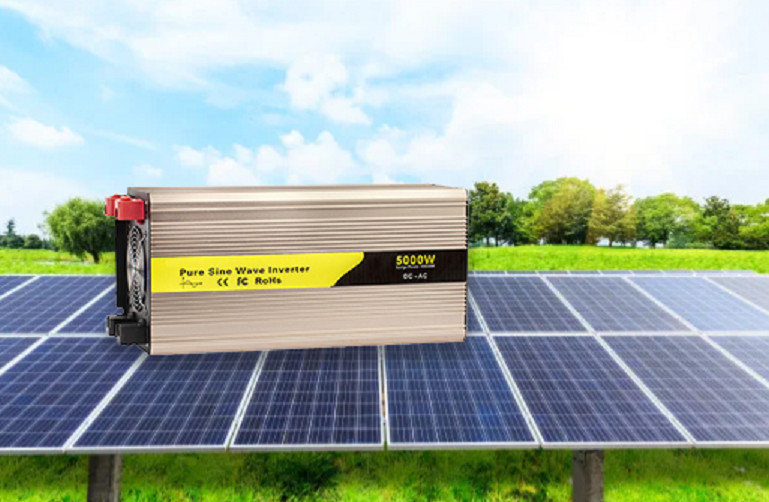Reviews
Understanding Sine Wave Inverter Types: Choose the Right One for Your Power Needs

Have you ever observed your appliances acting strangely or producing unusual sounds when running on backup power? The problem is usually not with the device itself but the type of inverter that supplies the power. The inverter choice becomes crucial for powering sensitive electronics and ensuring energy access during outages. High quality sine wave inverters deliver power with a clean and stable output that duplicates the characteristics of grid electricity. Select these inverters whenever you require solar power infrastructure installation or need to operate essential medical equipment or back up your home power system.
A sine wave inverter: what is it?
Batteries’ DC electricity is transformed into AC power with the same quality as grid power via a sine wave inverter. The AC output from the inverter has a smooth, steady waveform, similar to utility grid electricity.The High quality sine wave inverter controls the output voltage through pulse width modulation (PWM) technology. This modulation method generates multiple pulses of different widths in each cycle to make the output waveform closer to a sine wave, thereby reducing the harmonic content and obtaining smooth voltage control.
Hence, gadgets, including laptops, refrigerators, air conditioners, and medical equipment, can safely use the power a sine wave inverter produces.
Types of Sine Wave Inverters
The classification of sine wave inverters is based on the types of waveform they produce. Knowing the difference between these two primary types is vital for selecting the right inverter for your application.
- Modified Sine Wave Inverters produce waveforms with stepped or blocky patterns resembling true sine waves. The affordable nature of modified sine wave inverters works for light bulbs, fans, and simple tools, yet they create problems with sensitive electronic devices. The output of modified sine wave inverters creates electrical noise and overheating effects that negatively impact microprocessor-based appliances, including laptops and medical equipment.
- Pure Sine Wave Inverters produce a clean waveform that replicates the power quality of the utility grid. Pure sine wave inverters serve all equipment types, but they are most beneficial for equipment with sensitive circuitry, variable speed motors, and audio-visual systems. Pure sine wave inverters provide better protection for electronics through their efficient operation and silent running while addressing power anomalies.
The selection of these types depends on the devices you want to power. Invest in a pure sine wave inverter using advanced electronics because it provides compatibility, safety, and optimal performance.
Key Features
The sine wave inverters have advanced features that provide wide-range compatibility, long-term reliability, and high efficiency. Here is a detailed analysis of the salient features:
1. Input and output option
- Ensure the inverter produces an output voltage suitable for your equipment (110V, 220V) and that it operates with the voltage of your available power source (12V, 24V, 48V).
- Helps optimize system design based on energy storage and application needs.
2. Wide Power Capacity Range:
- The product line includes models starting at 300W for laptop and LED light applications and extending to 10,000W or higher for industrial needs.
- The small-scale inverters work well for mobile and emergency power applications, and the large-capacity units can power entire homes, workshops, or commercial sites.
- You can grow your system using scalable alternatives as your power requirements increase.
3. Built-in Safety & Protection Features:
- The system protects against over-voltage, low voltage, overload, short circuit, and overheating.
- This feature will extend the lifespan of your inverter and connected devices.
- The system includes LED/LCD indicators and audible alarms which immediately notify you about faults.
- The system operates as a safety feature to maintain stability while providing easy troubleshooting capabilities.
4. High Conversion Efficiency:
- Achieves efficiency ratings of over 90%, meaning minimal energy loss during the DC-to-AC conversion process.
- Maximizes the usable output from solar arrays or battery storage, making your energy system more sustainable and cost-effective.
- Lower heat generation enhances the system’s overall durability.
5. Low Standby Power Consumption:
- Uses minimal energy when it is idle or in standby.
- This is particularly useful in solar or off-grid applications where conserving energy is of prime importance.
- Allows for longer battery life by cutting down on wasteful power consumption.
6. Quiet and Intelligent Operation:
- Advanced cooling systems with smart fan control only activate when required, minimizing noise levels.
- Perfect for environments like workshops, RVs, and bedrooms where silent operation is important.
- Maintains optimal operating temperature to prevent overheating and maintain efficiency.
7. Smart Cooling and LCD Monitoring:
- Premium models include backlit LCDs that show real-time information, such as input voltage, output voltage, frequency, load percentage, and fault indicators.
- Helps users monitor system performance and status at a glance.
- Some models also support remote control or smartphone monitoring for added convenience.
These advanced features enable the pure sine wave inverter to deliver clean, steady power and the durability, intelligence, and efficiency needed for modern power applications.
Benefits of Sine Wave Inverter Usage
Choosing a sine wave inverter has many benefits for users.
- Devices that require stable energy to operate are powered by highly compatible pure sine wave inverters. These devices include laptops, medical devices, and audio devices, which are sensitive electronic equipment.
- Inductive loads are best supplied with pure sine wave electricity as it allows motors and compressors to run smoother and quieter resulting in longer life to the equipment.
- Sine wave inverters decrease electrical interference, which leads to better fan operation flu, crescent light performance, and audio amplifier functionality.
- Functionality while providing smoother operation.
- It protects computer systems from crashes, monitors glitches, and prevents malfunctions in microprocessor-based equipment.
- These inverters supply electricity to various devices, including medical equipment and laser printers that modified sine wave inverters cannot support.
How to Select the Right Sine Wave Inverter
Assess Your Power Needs:
- Make a list of all the devices you plan to run simultaneously.
- Calculate their total wattage and choose an inverter with at least 25-30% more capacity for surge loads.
Match Voltage Requirements:
- Ensure the input voltage is compatible with the battery or solar system voltage, which can be 12V, 24V, or 48V.
- Make sure that the output voltage is 110V or 220V, as needed for the region your country is in.
Check Efficiency Ratings:
Look for models with 90% or higher efficiency to minimize energy loss.
Verify Safety Features:
Ensure the inverter includes the following:
- Overload protection
- Over-temperature shutdown
- Battery over-discharge protection
- Input/output short circuit protection
Consider Display and Monitoring Options:
- Inverters with LCD or LED displays provide real-time feedback on system performance.
- Some models support remote control and mobile app monitoring.
Check Certification and Build Quality:
- CE, RoHS, UL, or ISO-approved models should be given priority.
- Using aluminum alloy shells enhances the heat dissipation and longevity of products.
Evaluate Warranty and Support:
- Choose a manufacturer offering at least 1-2 years of warranty and responsive customer support.
Final Thoughts
Selecting the appropriate sine wave inverter determines the safety and efficiency, along with the lifespan of your power system. Users who understand pure and modified sine wave inverters will make better choices between devices and their performance requirements.
Sine wave inverters provide the best power quality, which makes them suitable for sensitive electronics and high-demand applications, but modified sine wave inverters work better with basic loads. When choosing an inverter, users should evaluate power capacity alongside voltage requirements and safety features, and monitoring capabilities. A properly selected inverter system protects equipment while maximizing energy efficiency in residential and commercial power systems.

-

 US News6 days ago
US News6 days agoJetBlue flight diverts to Tampa after altitude drop injures at least 15
-

 Breaking News14 hours ago
Breaking News14 hours agoAt least 3 dead, 11 injured after UPS cargo plane crashes near Louisville airport
-

 World1 week ago
World1 week agoU.S. Navy helicopter and fighter jet crash in South China Sea; all crew rescued
-

 World3 days ago
World3 days agoStrong 6.3 earthquake strikes northern Afghanistan; felt across Pakistan
-

 World2 days ago
World2 days agoProtesters storm government building in Mexico after killing of local mayor
-

 World4 days ago
World4 days ago10 people stabbed on train in Huntingdon, England
-

 US News6 days ago
US News6 days agoTrump says U.S. will resume nuclear weapons testing ‘on an equal basis’
-

 US News1 week ago
US News1 week agoDamage reported in Kilgore, Texas following tornado warning




